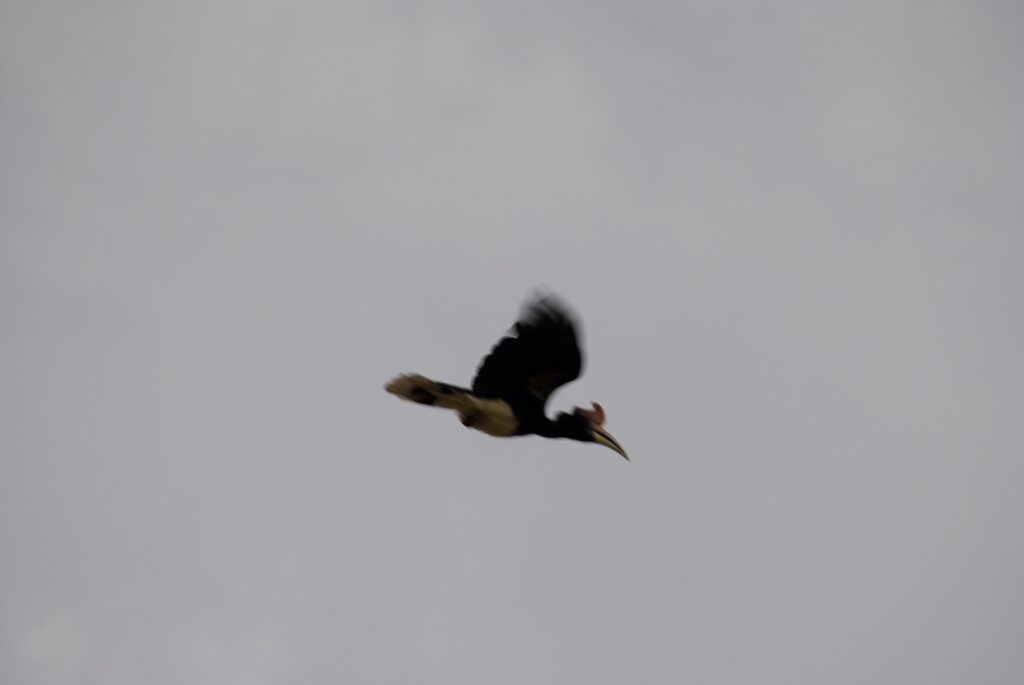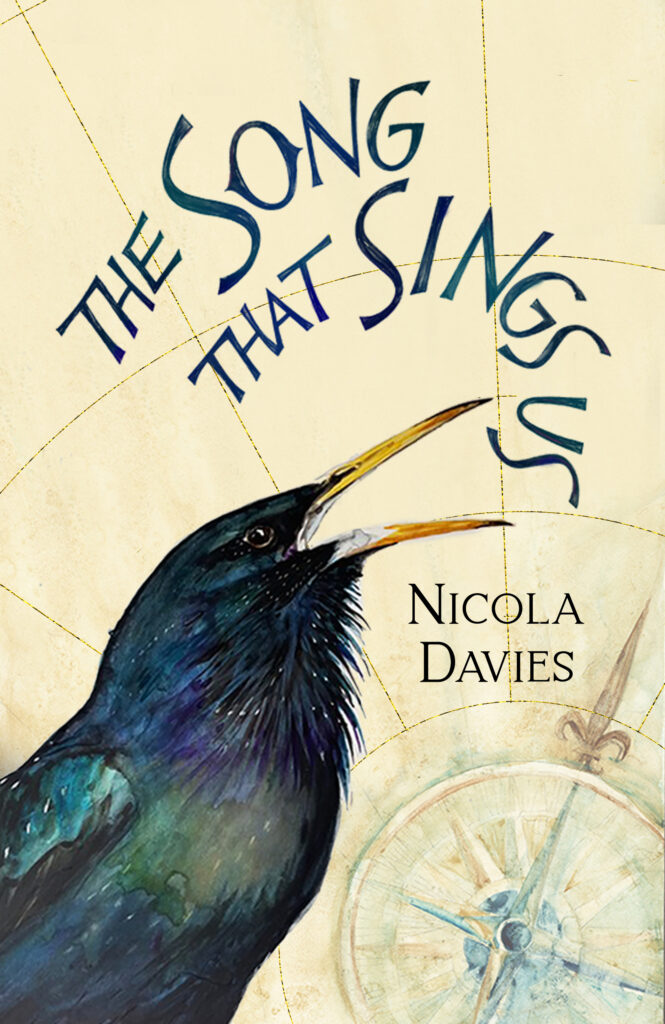
‘Beneath the green surface of the canopy there is so much life, so many living things entwined, so many voices! The elephant stretches out her trunk, reading the scents in the air. She can sense every one of those million lives hidden now amidst the leaves and branches, and her thoughts reach out to greet them
the forest sings,
one kin,
all one kin, growing!’
From The Song That Sings Us Cover by Jackie Morris
publishing 14.10. 21 with Firefly
In the 1950’s my father, a food technologist, travelled to the forests of Sarawak. He wasn’t much of a traveller, and always said that, after trekking round Europe in WW2, he didn’t want to leave home again. But, for the sake of work, he went on Dyak longboats, up rivers that ran beneath the closed, cathedral canopy of the oldest rainforests on earth. The forests he saw he described to me, when I was little; in my mind’s eye I saw their grandeur, their scale, their unimaginable complexity.
Spool forward half a century and I had my own chance to visit such forests, in neighbouring Borneo. But the gallery rainforest my father had experienced was largely gone. The biggest trees logged, with only smaller, secondary growth remaining. Worse, much of the forest was altogether destroyed, by the marching ranks of palm oil.
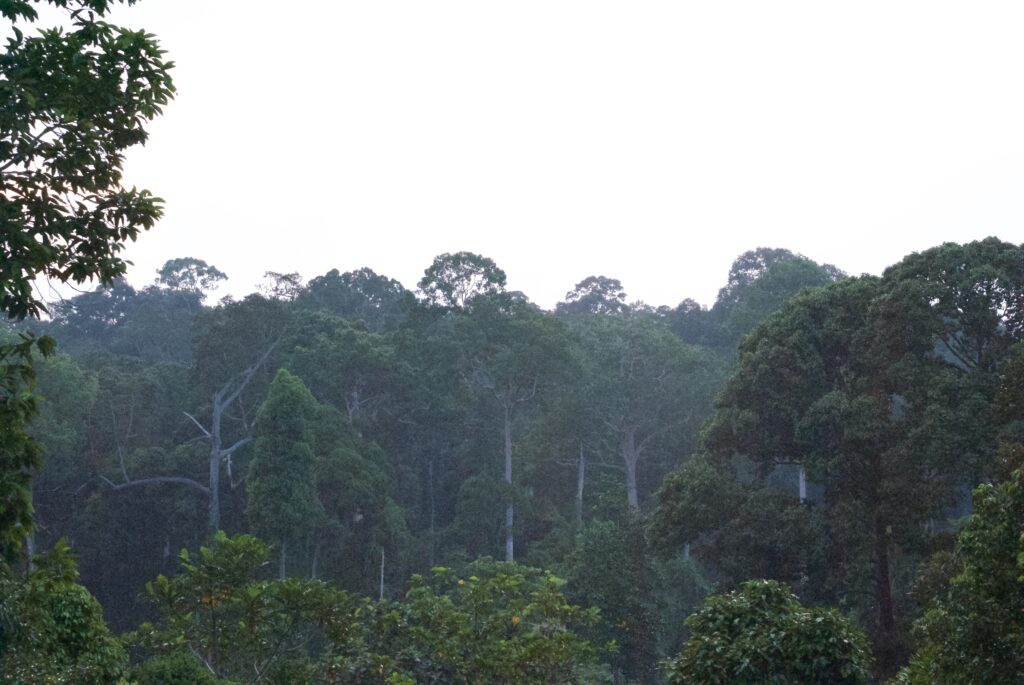
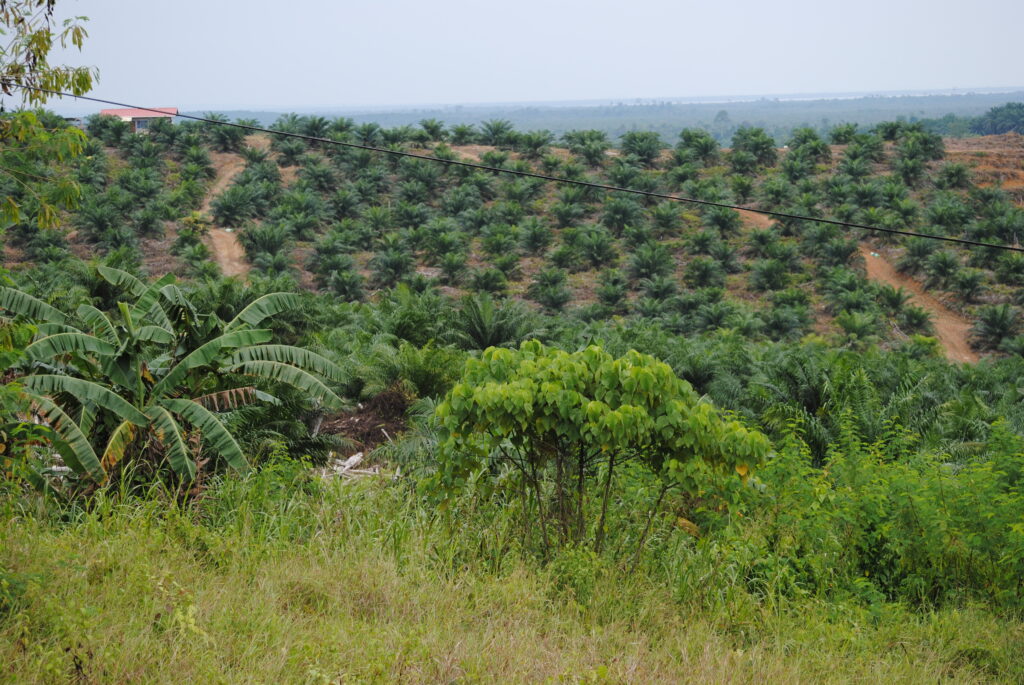
I was visiting the Kinabatangan river where a conservation organisation, Hutan was working in partners ship with The World Land Trust, the organisation for whom I was then a trustee The aim then was to connect small pockets of remaining secondary forest, alongside the river to form a continuous habitat, linking two forest reserves.
This connection work was, and is, incredibly important. To see why, I want you to imagine an apocalypse, where your world has been reduced to a barren wasteland, too hostile and dangerous to cross. You and a few of your family and friends have survived, cocooned in a green oasis, where there is food, water and shelter. In a generation or two inbreeding will end the existence of your little colony, as your offspring will be too weak, too prone to disease and defect, to survive. What’s more, your refuge is so small that every other species, all the plants and animals that provide your ‘green oasis’, will suffer the same fate.
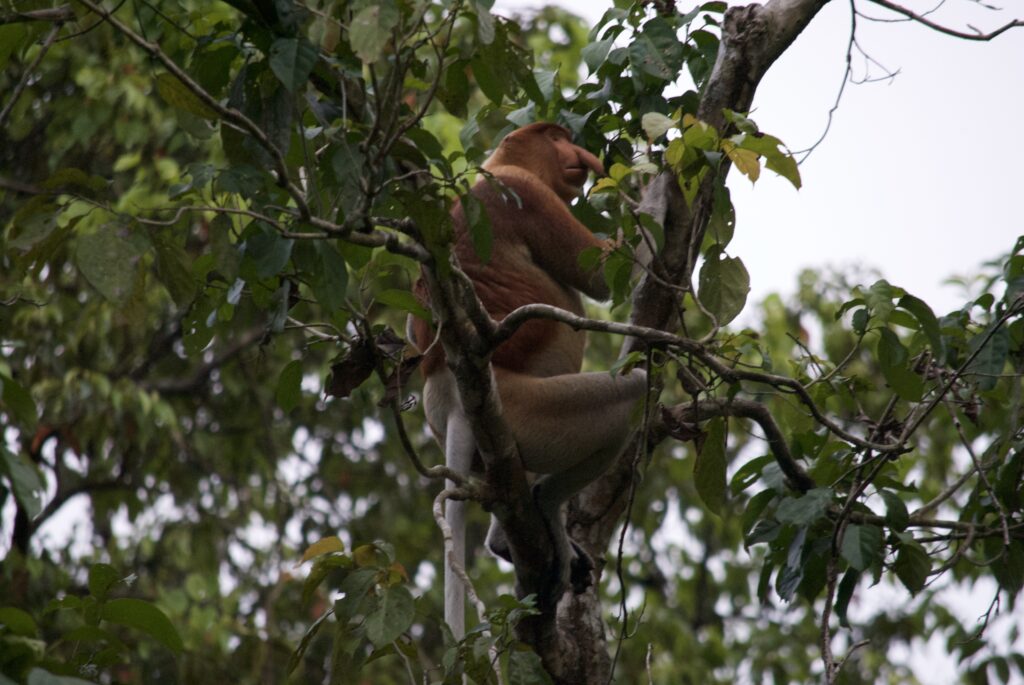
This is the situation facing the orange utans, proboscis monkeys, leaf monkeys, macaques, pangolins, hornbills and countless other species in Borneo’s remaining forest refuges, islands in the sea of palm oil plantation. But there is hope. If these islands of green can be connected, their populations joined up, they can be viable in the long term. And of course, animals and plants in forests are interdependent, neither can survive without the other; and without the forests we have no hope of keeping climate change within survivable bounds.
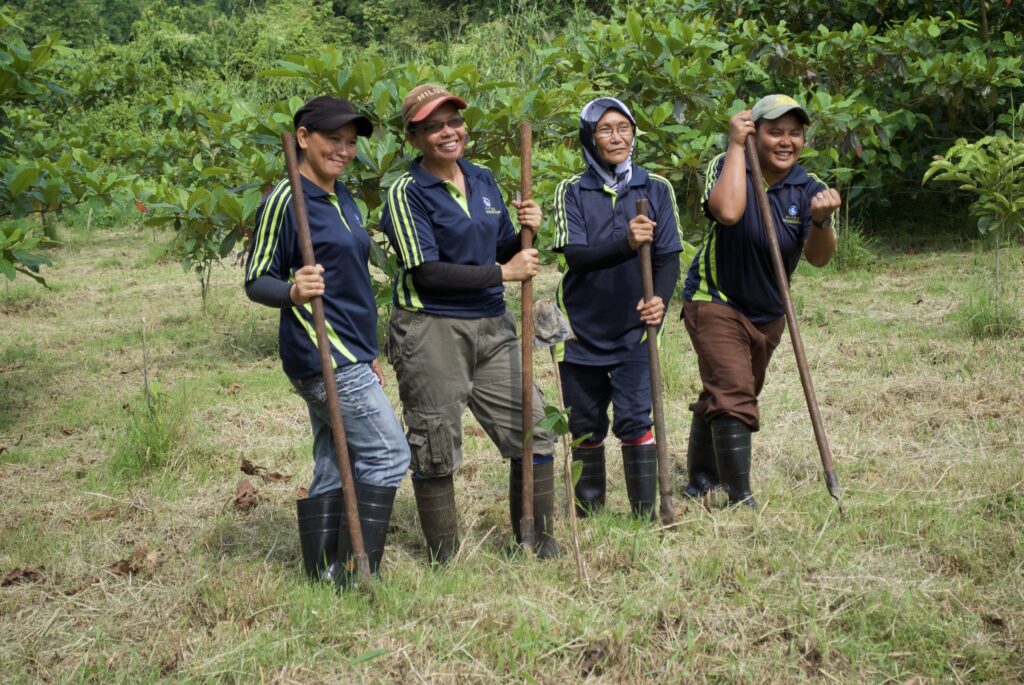
It’s hard to feel connected to a forest that is on the other side of the world. Yet, as we discover more about the complexity of the natural world, the message that the science speaks again and again is that all life is connected.
Our fate is tied to that of the orang utans and the proboscis monkeys, to the web of biodiversity that once clothed land and sea, and which we have so assiduously unravelled. It’s time to change, to realise that all life is ‘one kin’.
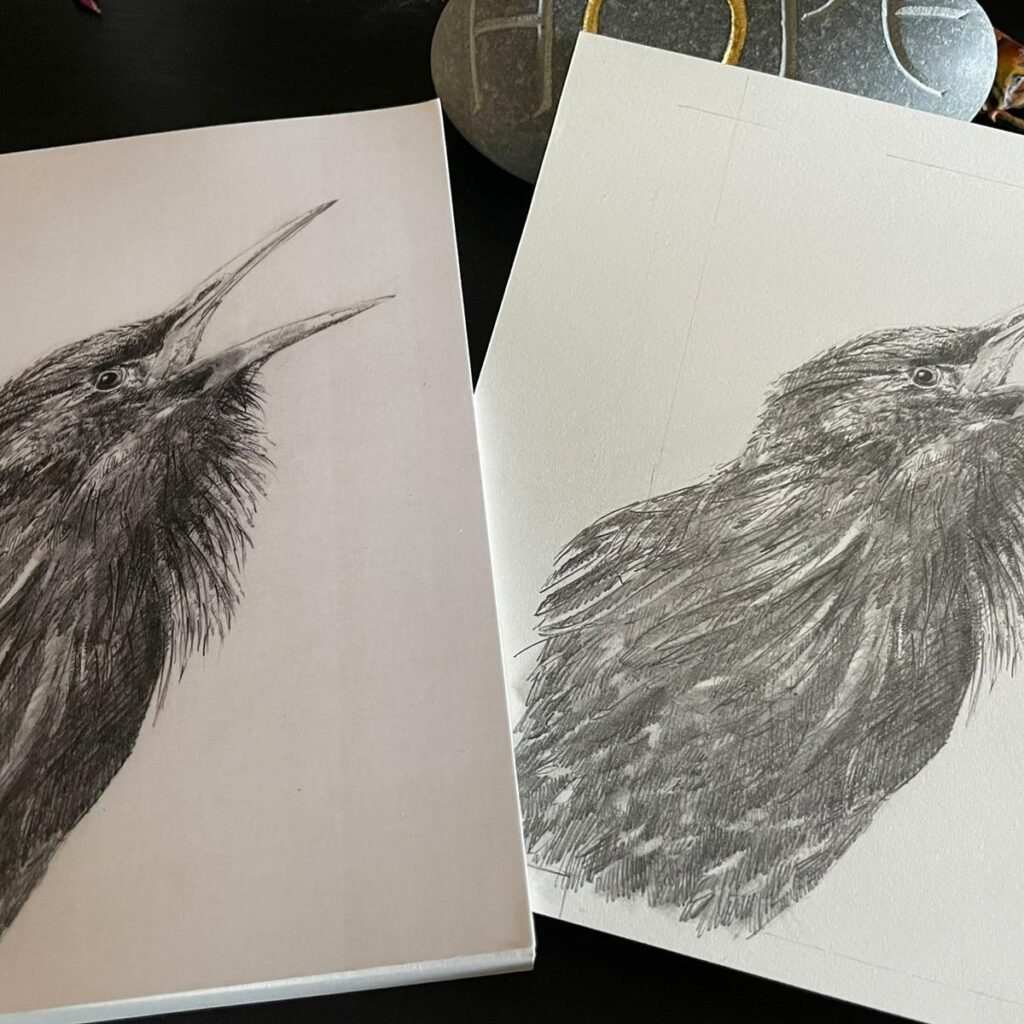
That is the over riding message of my new novel, the Song That Sings Us, which will be published in the UK in October this year. It is an adventure story that is also a love song to the life of our planet, for readers of all ages from young to old. That’s why I’m offering the chance for readers to get their hands on this story early, by bidding for a proof copy to raise funds for the World Land Trust’s Borneo appeal. (You can read all about that here). This IS rather a special proof copy. The cover has been created by artist Jackie Morris, who many may know for her extraordinary work on The Lost Words and the Lost Spells, among many other titles. The copy of The Song That Sings Us that we are auctioning will contain extra, original drawings by Jackie.
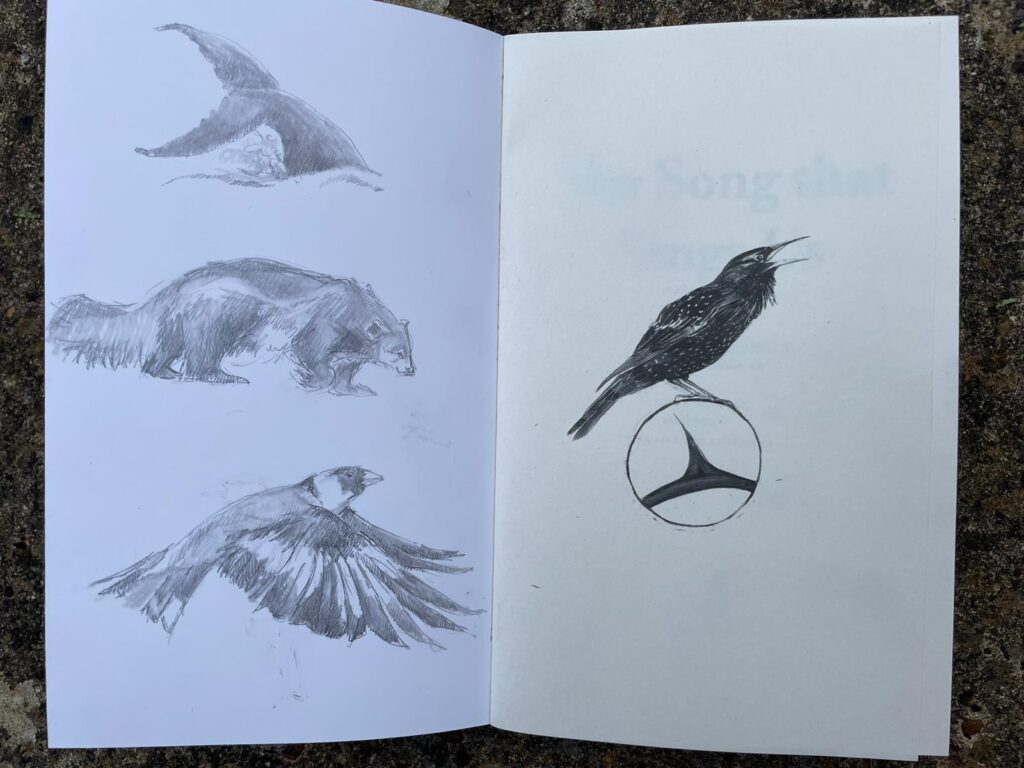
I can’t emphasise too strongly how special this copy of the book is: fewer than 150 copies of the proofs have been printed, with a cover different from the cover that will go on the published book; proofs are only available to industry professionals, not to the public in other words, you cant buy one. Add to that the original drawings that Jackie has added and you have something utterly and completely unique.
The auction begins now, with this post. You can bid by e mailing me
gaiawarriors.davies@googlemail.com
As the aim is to raise as much as possible to safeguard the incredible diversity of the Kinabatangan, I will simply take the highest bid I receive, in the next week or so. I’ll tweet about the bids, and the progress of the auction, through my twitter account @nicolakidsbooks. The winner will get both a unique proof copy of the book, not available to the general public, and the knowledge of having helped to keep Bornean biodiversity a little safer.
If your bid doesn’t win, you can still donate to the WLT’s Borneo appeal here and order a copy of the special edition hardback of The Song That Sings Us, out in October, from the publishers Firefly, here.
UPDATE 6th JULY
Latest bid stands at £400! This is brilliant but I want to see if we can raise even more to help safeguard the Kinabatangan forest. So I’m keeping the auction going for a bit longer. Bidding will now close at 5pm on Friday 9th
BID NOW!
Bid by e mail
gaiawarriors.davies@googlemail.com
or by DM me on Twitter
or even leave your bid here in the comments
